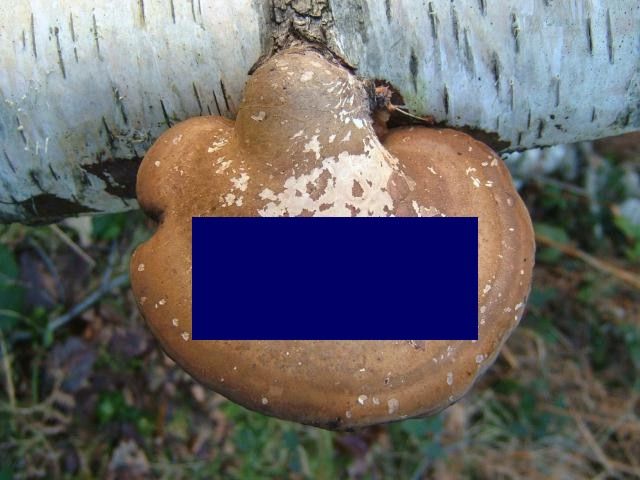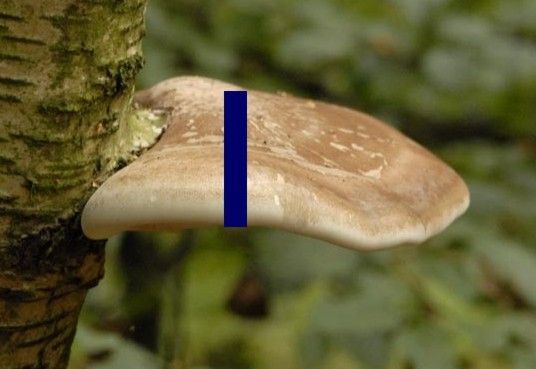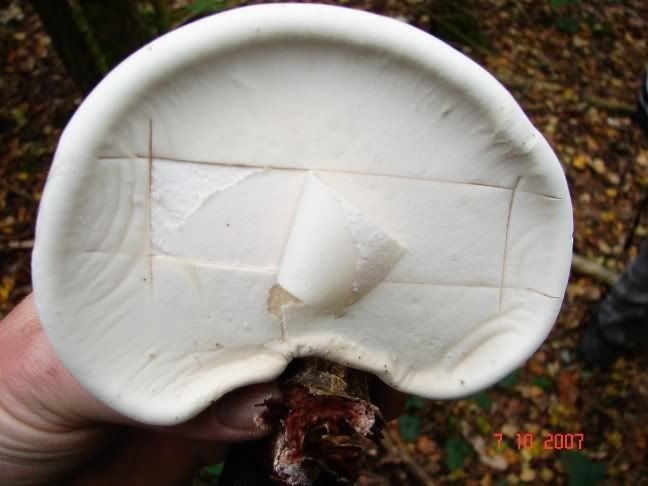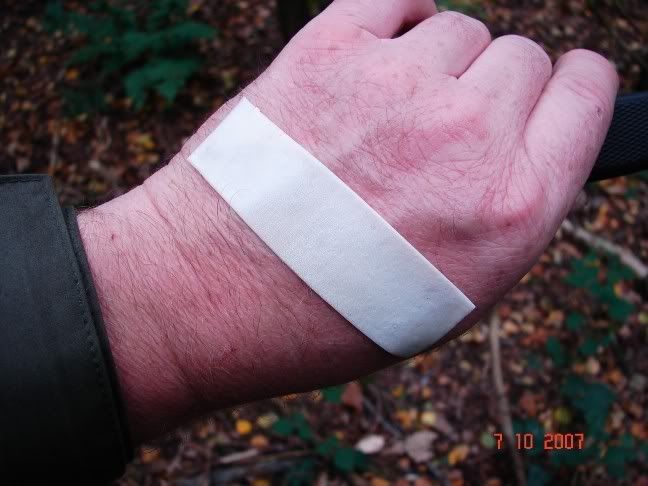I found a lovely birch polypore yesterday, I'd guess 7-8" across its widest part. It was on a dead birch that must have been blown down in the recent winds, and was pointing up towards the sky - it had obviously been growing in the 'normal' position on the trunk when the tree was upright.
I've gone through a lot of the previous postings on this fungus, regarding making it into a strop but none of them appear to have any pictures of how it should be cut. These aren't pictures of my fungus, but for a strop would you cut out a section like the first blue rectangle (i.e. a horizontal section of the fungus), then take off the upper brown layer and the pore layer at the bottom, or would you take out a slice like the blue rectangle in the second picture (i.e. a vertical section of the fungus)? I think you then dry it and stick it onto a board (rather than sticking it onto a board then drying it).


Also, if you were going to make a natural micropore plaster, I'm guessing that you'd take out a horizontal slice from the pore layer. Or I think I may have seen some people say that you use the upper brown layer as a plaster.
I've also read mixed reports about its effectiveness as a tinder. Given that it grows on birch, there is likely to be an almost unlimited supply of birch bark tinder in the area where it is found.
Any thoughts?
Geoff
I've gone through a lot of the previous postings on this fungus, regarding making it into a strop but none of them appear to have any pictures of how it should be cut. These aren't pictures of my fungus, but for a strop would you cut out a section like the first blue rectangle (i.e. a horizontal section of the fungus), then take off the upper brown layer and the pore layer at the bottom, or would you take out a slice like the blue rectangle in the second picture (i.e. a vertical section of the fungus)? I think you then dry it and stick it onto a board (rather than sticking it onto a board then drying it).


Also, if you were going to make a natural micropore plaster, I'm guessing that you'd take out a horizontal slice from the pore layer. Or I think I may have seen some people say that you use the upper brown layer as a plaster.
I've also read mixed reports about its effectiveness as a tinder. Given that it grows on birch, there is likely to be an almost unlimited supply of birch bark tinder in the area where it is found.
Any thoughts?
Geoff
Last edited:


